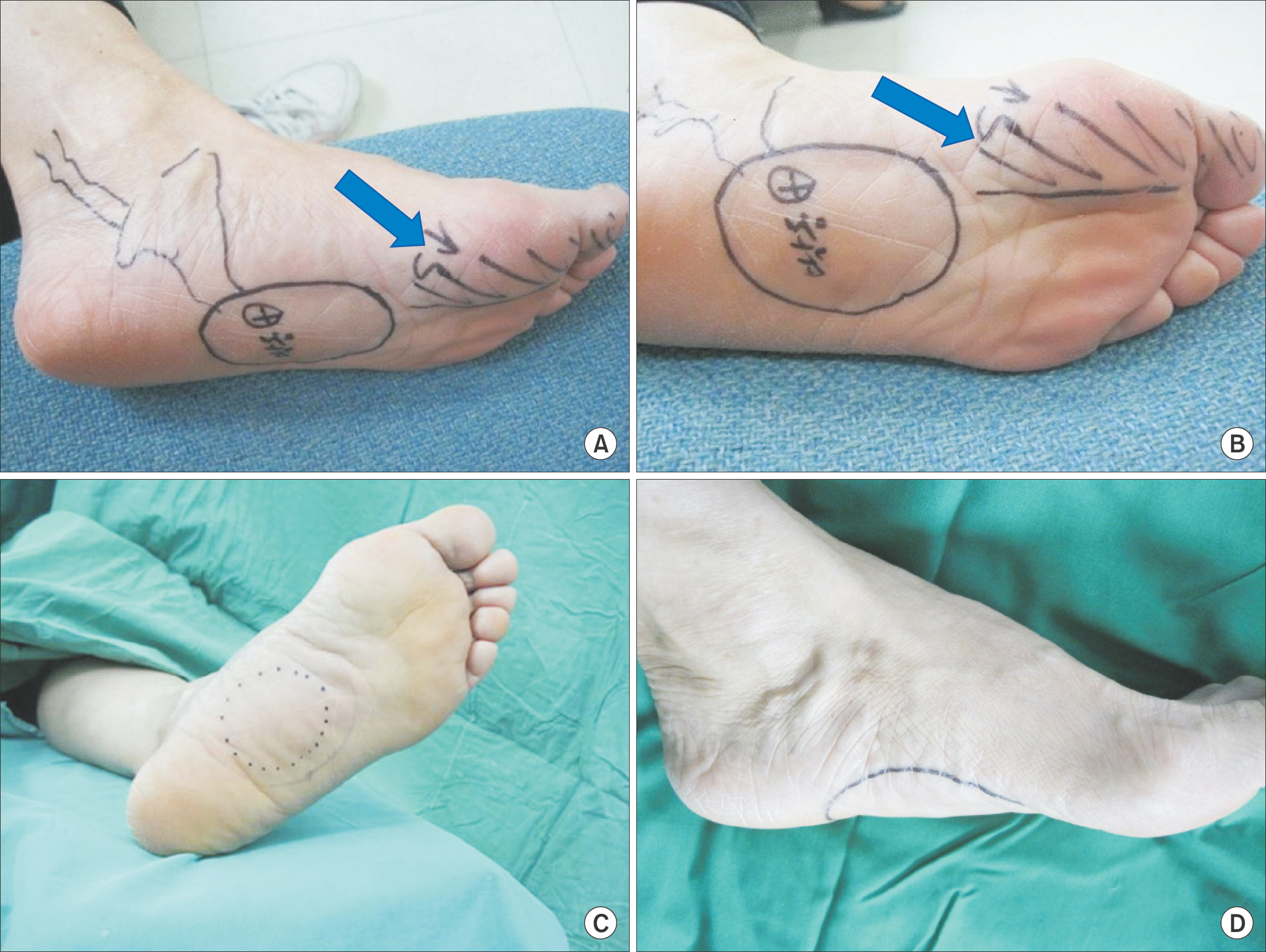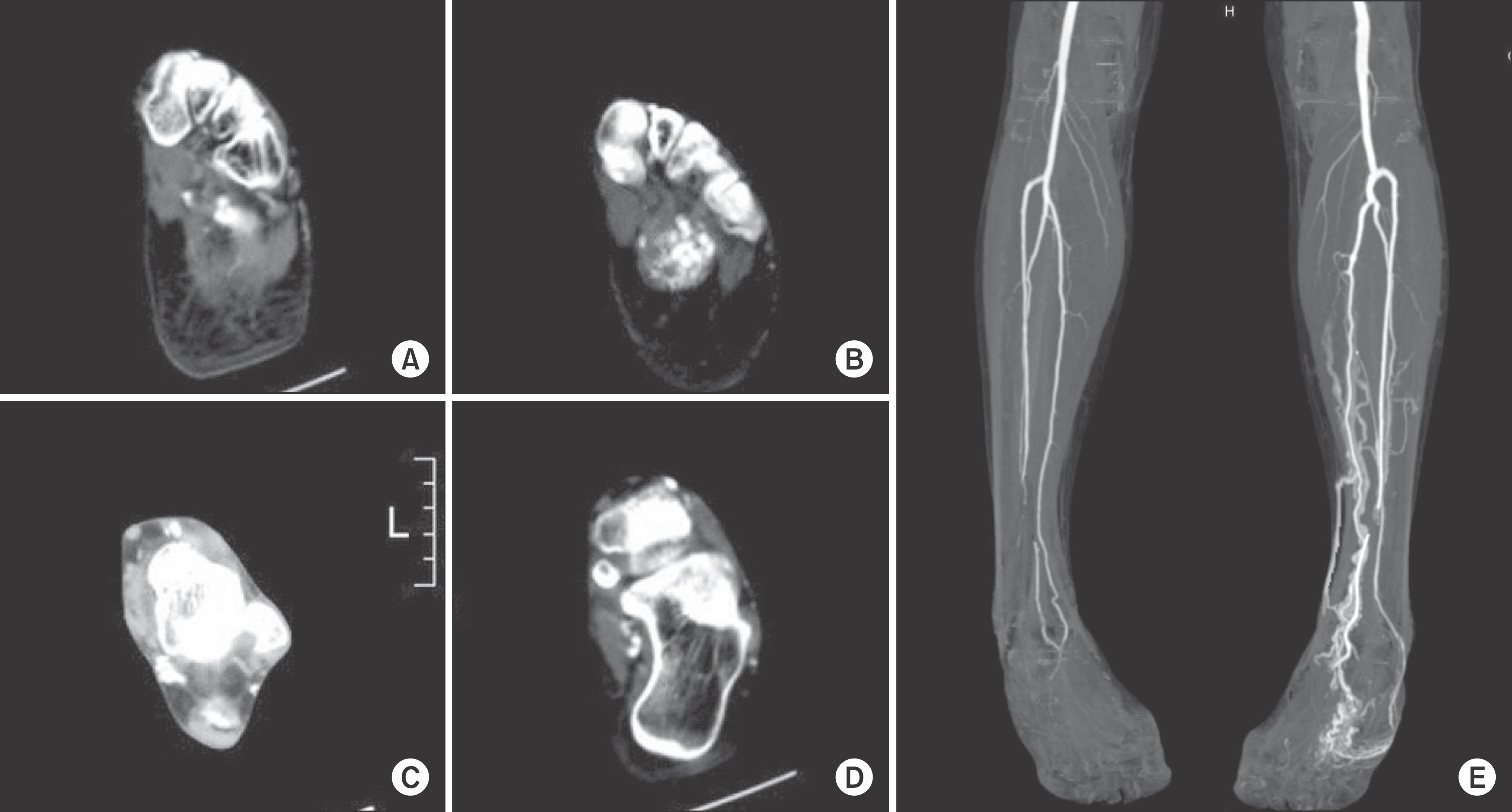J Korean Foot Ankle Soc.
2016 Dec;20(4):187-191. 10.14193/jkfas.2016.20.4.187.
Arteriovenous Malformation on the Medial Plantar Area of the Foot: A Case Report
- Affiliations
-
- 1Department of Orthopedics Surgery, Wonkwang University Sanbon Hospital, Gunpo, Korea. castkim@hanmail.net
- 2Department of General Surgery, Wonkwang University Sanbon Hospital, Gunpo, Korea.
- KMID: 2362768
- DOI: http://doi.org/10.14193/jkfas.2016.20.4.187
Abstract
- Arteriovenous malformation (A-V malformation) is defined as an abnormal connection between arteries and veins that lead to A-V shunting with an intervening network of vessels. A-V malformation is a rare condition, and spontaneous regression is also rare. A-V malformation becomes symptomatic when the surrounding tissue and osseous structures are negatively affected. A-V malformation has a high recurrence rate and is relatively hard to treat. In this case, a huge mass with pulsatile and bruit on the medial plantar area were observed. With the diagnosis of A-V malformation in accordance with the results from ultrasonography, magnetic resonance imaging and computed tomography angiography, and mass excision with feeding vessel ligation through plantar midfoot approach was completed successfully.
Keyword
MeSH Terms
Figure
Reference
-
1.Shetty PC., Beninson J., Collison DW., Burke TH. Successful embolization of multiple AV foot lesions--a case history. Angiology. 1990. 41:492–7.
Article2.Bernard EB., Cicchinelli LD., Poindexter JM Jr. A surgical approach to a vascular malformation in the plantar medial foot. J Foot Ankle Surg. 1994. 33:37–42.3.McNamara TO. Peripheral vascular imaging and intervention. J Vasc Surg. 1993. 18:720–1.
Article4.Rogalski R., Hensinger R., Loder R. Vascular abnormalities of the extremities: clinical findings and management. J Pediatr Orthop. 1993. 13:9–14.5.Yu GV., Brarens RM., Vincent AL. Arteriovenous malformation of the foot: a case presentation. J Foot Ankle Surg. 2004. 43:252–9.
Article6.Kunze B., Kluba T., Ernemann U., Miller S. Arteriovenous malformation: an unusual reason for foot pain in children. Foot Ankle Online J. 2009. 2:1.
Article7.Kim JK., Kim JS. Arteriovenous malformation infiltrating the extensor hallucis longus tendon: a case report. J Bone Joint Surg Am1. 2010. 92:210–6.8.Laurian C. Congenital arteriovenous malformations: what are the perspectives? Phlebolymphology. 2011. 18:149–53.9.Hyun D., Do YS., Park KB., Kim DI., Kim YW., Park HS, et al. Ethanol embolotherapy of foot arteriovenous malformations. J Vasc Surg. 2013. 58:1619–26.
Article
- Full Text Links
- Actions
-
Cited
- CITED
-
- Close
- Share
- Similar articles
-
- The Effect of Metatarsal Pad for Foot Pressure
- The Analysis of Relationship among the Anthropometric Index, the Foot Types and Dynamic Plantar Pressure in Normal Teenagers
- A Case of Arteriovenous Malformation of the Nasal Tip
- Congenital Arteriovenous Malformation of the Kidney: A Case Report
- The Management of Arteriovenous Malformation Diagnosed after Extremity Trauma








